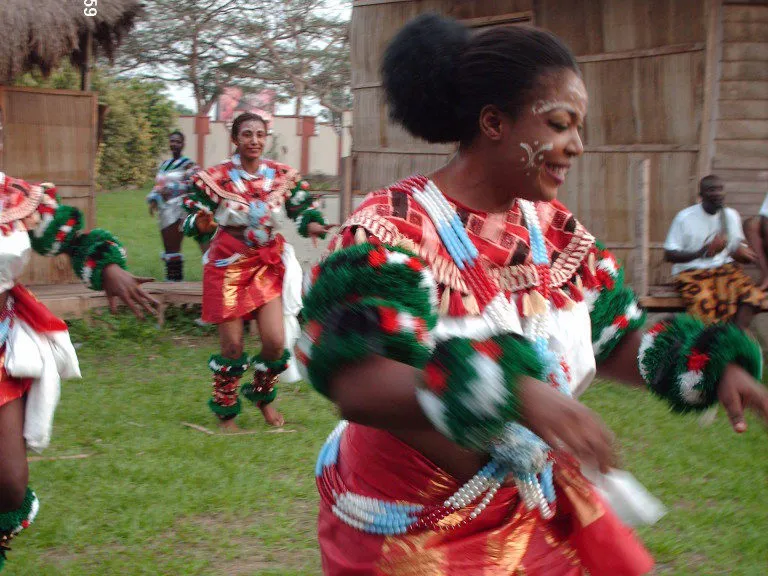Dance is a common cultural practice among the more than 350 tribes and ethnic groups that make up Nigeria. The cultural or traditional dances in Nigeria have a variety of functions, such as uniting a tribe’s members, retelling folktales, preserving a community’s history and traditions, showcasing a tribe’s wealth and power, celebrating, fulfilling religious obligations, amusing, and more.
The most enjoyable traditional dances are collected below.
1. “The Ekombi Dance.”

The Efik people of Calabar, Cross River State, have a distinctive dance known as the Ekombi. In this lovely and entertaining dance, young women in Nigeria wear multicolored outfits with mini skirts and blouses that reveal their tummies.
Beads of various colors and sizes are also used to embellish the maidens. To the rhytmic beats of the Efik drummers in the motion of the ocean tides, the Ekombi dancers whine gracefully. The Ekombi dance of the Efik people displays a woman’s beauty and maturity.
2. The Nkwa-Umu-Agbogho Dance.

The people of Ebonyi State are the ones who created this dance. Because it is specifically designed for women who have recently become ready for marriage, the Nkwa-Umu-Agbogho dance is also known as the “maidens dance.”.
In order to draw suitors, this dance calls for a vigorous twisting of the waist and chest. The “maiden dance” encourages younger girls to avoid having sex before getting married.
3. The Bata Dance.

One of the cultural/traditional dances of the Yoruba people of southwest Nigeria is the Bata dance. This dance is connected to Sango, the Yoruba thunder god who was reputed to be active in his youth.
The Iya-Ilu, Itotele, and Okokonlo drum set that makes up the bata drum is a set of three drums that provide the beats for the bata dance.
Due to its variety of moves and stunts, bata dance is incredibly entertaining. Both men and women can dance the bata in Yoruba culture.
4. Koroso Dance.

In Kano State, Nigeria, the Fulani and Kano people are where the Koroso dance first appeared. The Kosoro dance combines movements from the Fulani and Hausa traditional dances of Kano, getting its name from the rattle that Koroso dancers fasten to their legs.
The Koroso dancers typically perform in pairs, sometimes helping one another achieve seemingly impossible shapes and other times competing against one another. Such an exquisite and enjoyable dance!
5. Swange Dance.

In Benue State, Nigeria, Tiv men and women perform the Swange dance, which is amusing and recreational.
This dance is presented at ceremonial events or during festivals. The Tiv people refer to the Swange dance as being “boneless dance” due to the fact that its movements, whether slow, fast, or rhythmic, cause the dancers to shake ferociously.
Swange dance is accompanied by rhythmic beats and a traditional horn called “Al-Gaita” that is played continuously throughout the dance session.
.

